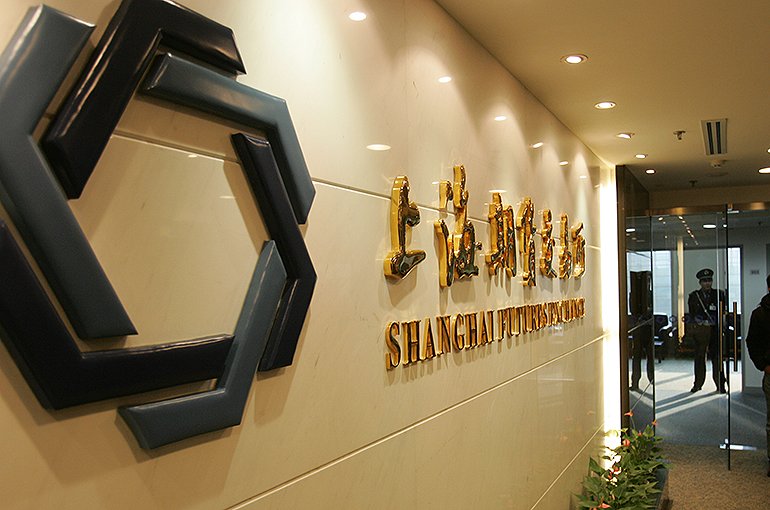A whole new generation of superconductors, so needed in many high-tech industries, will be based on palladium compounds, scientists believe, and this may be beneficial for Russia, which boasts the world’s reserves of this rare and expensive metal, as well as almost half of its production.
Zero resistance
In 1911, Dutch physicist Heike Kamerlingh Onnes discovered that the electrical resistance of solid mercury drops sharply to zero when cooled in liquid helium to 4.1 K (minus 269 degrees Celsius). This was the first officially recorded case of superconductivity.
Soon, several more superconductors were discovered. The transition temperature (Tc) was extremely low for all of them, close to absolute zero (0 K).
In 1986, Karl Müller and Georg Bednorz, employees of the IBM Corporation’s R&D division, discovered a material with Tc of 30 K — lanthanum barium copper oxide (LaBaCuO). They were awarded the Nobel Prize in Physics for this.
The main race of modern physics
In industry, devices and wires are cooled with liquid nitrogen, which boils at 77 K. Superconductors with Tc above this value are called high-temperature superconductors (HTSC).
In the 1990s, a number of cuprate compounds with Tc 130-150 K were obtained. The most famous is BSCCO, or, as physicists call it, “bisco”, consisting of layers of oxides of bismuth, strontium, copper and pure calcium.
High-temperature superconductors are already used in lossless energy transmission systems, non-contact high-speed trains, super-strong magnets for accelerators and thermonuclear reactors, super-efficient microchips, ultra-precise medical diagnostic devices, engines for interplanetary spacecraft. BSCCO, for example, is used in tens of kilometers of wires at the Large Hadron Collider at CERN.
A real race has unfolded for ever higher temperature superconductors.
Cuprates, nickelates
Cuprates are complex compounds based on copper oxides that, under normal conditions, practically do not conduct electric current, that is, they are insulators.
They were singled out in a separate group of “strange metals,” or superconducting semimetals. It is believed that quantum principles must be applied to describe the behavior of electrons in them; some researchers even see cuprates as a special state of matter.
Physicists at Cornell University and the Flatiron Institute in New York in 2020, using quantum computing, built a digital model of “strange metals,” showing that cuprates are a cross between classical metals with mobile electrons and dielectrics in which electrons occupy fixed positions.
In 1999, Russian scientist Vladimir Anisimov and his colleagues suggested that nickelates, complex compounds based on nickel oxide, could also have high-temperature superconductivity. Indeed, several nickel-containing HTSCs were subsequently discovered.
At one time there was even talk of the new era of nickel-based superconductors. But there were some issues with that. First, obtaining nickelates is an extremely complex process. Secondly, these compounds, although closer in properties to metals, are less stable than cuprates. This is explained by the fact that the energy states of nickel electrons are higher than those of copper, so they more actively enter into various interactions.
The era of palladium
In optimal HTSCs, electrons should interact with each other more strongly than in cuprates, but weaker than in nickelates. Physicists from Japan and Austria, in their publication Optimizing Superconductivity: From Cuprates via Nickelates to Palladates, pointed to palladium compounds called palladates.
“Palladium is directly one line below nickel in the periodic table. The properties are similar, but the electrons there are on average somewhat further away from the atomic nucleus and each other, so the electronic interaction is weaker,” lead researcher Karsten Held from the Institute of Solid State Physics, Vienna University of Technology, said.

Palladates have an ideal electronic configuration for high-temperature superconductivity. By building a model with variables such as the electrons’ interaction strength, filling factor, and energy-momentum dispersion, the researchers determined the superconductivity band in palladates and mapped out two compounds with the highest Tc, around 100 K: RbSr2PdO3 and (Ba0.5La0.5)2PdO2Cl2.
The researchers hope that their fellow experimenters will synthesize these materials and test their properties in the laboratory.
“The computational results are very promising,” Karsten Held says. “We hope that we can now use them to initiate experimental research. If we have a whole new, additional class of materials available with palladates to better understand superconductivity and to create even better superconductors, this could bring the entire research field forward.”
For Russia, which has the world’s largest palladium reserves, this is good news. The deposits are located in the area around Norilsk and on the Kola Peninsula.
Palladium’s main use is in the catalytic converters of cars’ internal combustion engines. This metal is also used in electronics, medical equipment, chemical and jewelry industries. Thanks to palladate-based HTS, demand for it could rise sharply.
“This will actually form a new sphere of consumption of palladium with an annual volume of up to 100 tonnes,” metals industry expert Leonid Khazanov noted. “Russia is capable of occupying 20-30% of the world HTSC market.”
The difficulty is that palladium is very rare and expensive. It is currently trading above $1,400 per ounce (about 31 grams), with global annual production of just about 250 tonnes.






